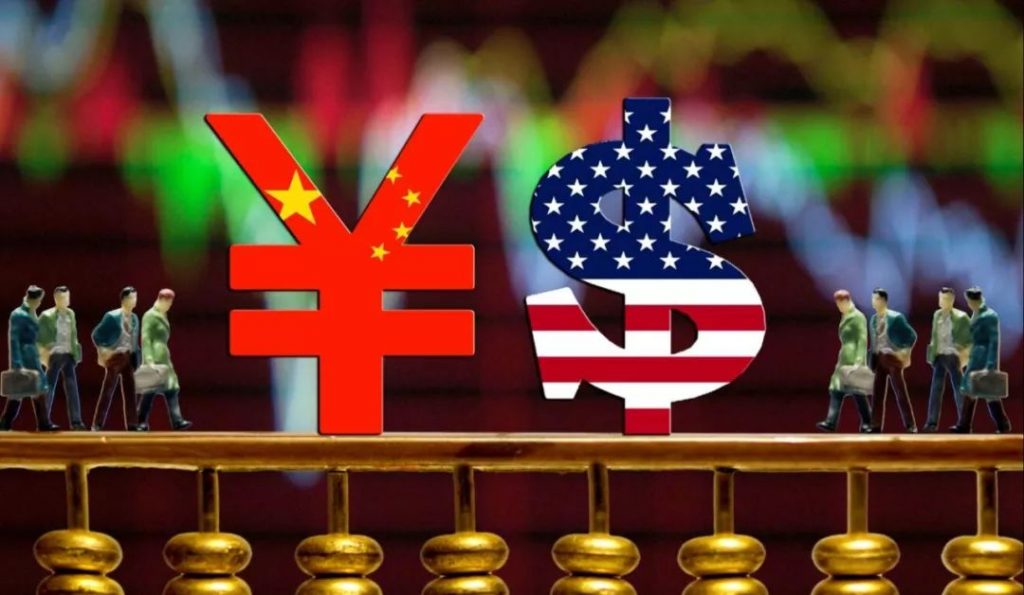
A still from ‘Being There’
Last Tuesday, U.S. Trade Representative (and Trump appointee) Robert Lighthizer released a statement explaining that his office would seek to impose a second round of tariffs on Chinese imports, this time 10% tariffs on an additional $200B in imports. The first round of tariffs, which went into effect on Friday, July 6, imposed tariffs on $34B in imports, and was quickly matched by China’s imposition of tariffs on $34B in US exports to China.
The USTR is justifying its actions on the basis of the 200-page Section 301 report which detailed a wide range of allegedly unfair trading practices by the Chinese government, including forced technology transfer, theft of IP and technology, improper government subsidization, and lack of reciprocity.
It is difficult to find anyone outside China who disagrees with the substance of the Section 301 report, but it is difficult to find anyone outside the Trump administration who understands – let alone agrees with – the country’s blithe entry into a trade war. Ramesh Ponnuru, a senior editor at National Review (hardly a bastion of liberal thought), wrote a cheeky opinion piece in Bloomberg laying out what he saw as Trump’s Four Rules for Conducting a Trade War:
- Assume that you will win it effortlessly.
- Make sure your tariffs are designed to inflict maximum damage on your own country’s companies.
- Take on as many countries simultaneously as you can.
- Don’t feel that you have to make your negotiating demands clear.
The USTR has released a tentative list of 6,031 product categories that, in aggregate, allegedly represent $200B worth of Chinese imports. Included on this list, to the chagrin of almost everyone in the entertainment industry, is the following category: “Motion-picture film of a width of 35 mm or more, exposed and developed, whether or not incorporating sound track.” The list also includes motion picture films of a width less than 35mm, but it is silent as to whether this would extend to movies on digital media, which is how the vast majority of films are distributed these days. See Rule (4) above.
Industry observers have been trying to figure out what, if anything, this means to the Chinese film industry, the US film industry, and the interaction between the two. From an economic standpoint, putting tariffs on motion picture imports from China is solely a symbolic gesture. China would love to be exporting films in such quantities that these tariffs would hurt, but they aren’t. As we wrote in What Does the Chinese Film Industry Get From Hollywood?, Chinese films simply don’t do business in the U.S. In the past 10 years, the highest-grossing Chinese films in the U.S. have been The Grandmaster (2013, $6.6M), The Mermaid (2016, $3.2M), and Wolf Warrior 2 (2017, $2.7M).
Meanwhile, multiple U.S. films each year gross more than $100M in China.
Putting all this together, it seems possible (if not likely) that the Trump administration is simply baiting the Chinese government to retaliate against the liberal redoubt of Hollywood. See Rule (2) above. China would love to see Chinese films dominate the Chinese box office, and they certainly don’t care about protecting American business interests. But they also don’t want to do Trump’s dirty work for him.
At this point, all options are open to the Chinese government, and they have even more political cover to take whatever action they like. My guess is that the Chinese won’t do anything except use the threat of tariffs as an excuse to postpone the already-interminable negotiations over the revised film quota and profit-sharing arrangements. I’d do the same thing in their place. How could they possibly reach an agreement on film imports with the threat of retaliatory action hanging over the entire process? This way, the Chinese can have their cake and eat it too.
Of course, it’s also possible the Trump administration didn’t think about any of this too deeply and everyone is reading in complexity where there is none. Being There, anyone?
— This article originally appeared on China Law Blog.







